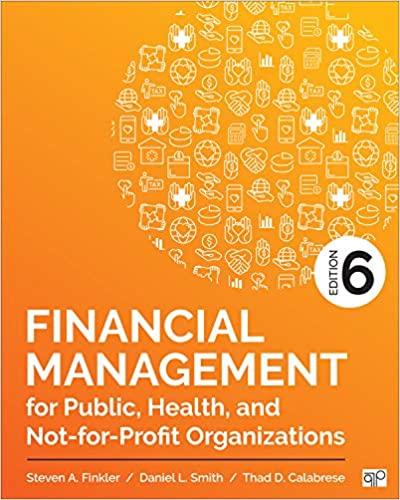Question
The market-value balance sheet and other financial data for Company XXX are listed below. Asset value $1,200,000 Debt $300,000 Equity $900,000 $1,200,000 $1,200,000 Cost of
- The market-value balance sheet and other financial data for Company XXX are listed below.
Asset value $1,200,000 Debt $300,000
Equity $900,000
$1,200,000 $1,200,000
Cost of debt 6%
Cost of equity 12%
Marginal tax rate 21%
The financial manager of company XXX is considering a project that requires $50,000 investment today and expects to generate a perpetual earnings and cash flow of $5,000 each year (pre-tax). Assume no depreciation. However, the project supports only 40% debt, which is different from the debt ratio of company XXX overall.
Following Q2, the financial manager of company XXX is tempted to acquire company YYY. Company YYY is a private company without stock market price. However, it is in the same line of business as company XXX, you can assume it has the same business risk. The following table sets out the information that you need to forecast company YYYs free cash flows (the highlighted numbers are all forecasted numbers). You can assume the cash flow in year 0 has already occurred when you calculate the value of the business. Value horizon is 3 years. From year 4 onward, you assume a long-term growth rate of 3% each. Now assume Company XXX plans to finance the purchase with $30,000 of debt. It intends to pay down the debt to $22,234 in year 3 so that the debt ratio at the horizon is 25%, the normal debt ratio of company XXX.
| 0 | 1 | 2 | 3 | 4 | |
| Sales | 70000 | 71000 | 72000 | 73000 | 74000 |
| Cost of goods sold | 56000 | 56800 | 57600 | 46080 | 59200 |
| Net working capital | 10000 | 10142 | 10286 | 10429 | 10571 |
| Depreciation | 3000 | 4000 | 4000 | 4000 | 4000 |
| Gross fixed assets | 60000 | 65000 | 70000 | 76000 | 82000 |
| Debt | 30000 | 28000 | 25000 | 22234 |
|
| Investment in fixed assets (change in gross fixed assets) | 7000 |
| |||
| Investment in working capital | 300 |
| |||
You will use APV method to calculate the value of company YYY (keep four decimals). Show are your inputs to get full credit.
(a). Whats profit after tax in year 2? Show your inputs to get full credit. [0.5 point]
(b). Whats free cash flow in year 2? Show your inputs to get full credit. [1 point]
(c). Whats after-tax WACC and cost of capital of company XXX? [1 point]
(d). Whats horizon value (not the present value)? [1 point]
(e). Whats the base-case PV of company? Whats the PV of interest tax shields? Whats the PV of company YYY? [1.5 point]
Step by Step Solution
There are 3 Steps involved in it
Step: 1

Get Instant Access to Expert-Tailored Solutions
See step-by-step solutions with expert insights and AI powered tools for academic success
Step: 2

Step: 3

Ace Your Homework with AI
Get the answers you need in no time with our AI-driven, step-by-step assistance
Get Started


